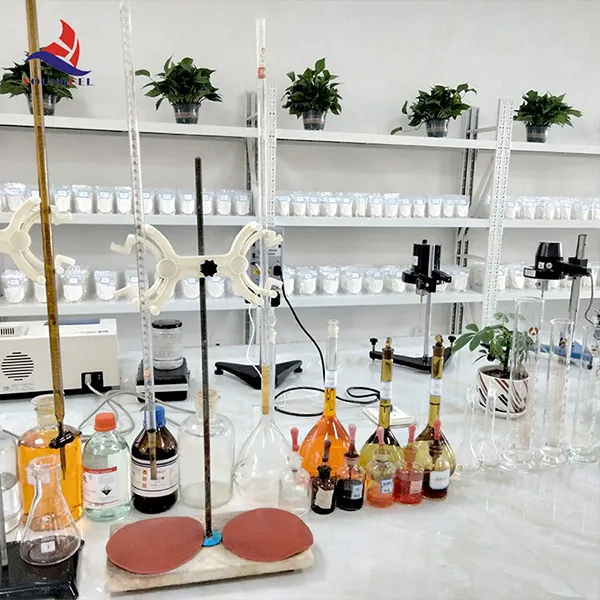Exploring Methocel (HPMC) Properties, Applications, and Benefits
Methocel, commonly known as Hydroxypropyl Methylcellulose (HPMC), is a versatile cellulose ether that has gained significant attention in various industries, including pharmaceuticals, food, cosmetics, and construction. With its unique properties and applications, HPMC plays a crucial role in enhancing product performance and consumer experience.
Properties of Methocel (HPMC)
HPMC is a white, odorless powder that is easily soluble in cold water, forming a clear, viscous solution. This solubility is one of its key properties, allowing it to function effectively in diverse applications. The degree of substitution and molecular weight of HPMC can be modified to achieve specific characteristics tailored for different uses. This adaptability is one of the reasons why HPMC is a preferred choice in many formulations.
One of the most notable properties of HPMC is its ability to act as a thickening agent. When dissolved in water, it increases the viscosity of the solution, improving the texture and stability of products. Additionally, HPMC exhibits excellent film-forming capabilities, making it suitable for coatings and controlled-release formulations.
Applications of Methocel (HPMC)
1. Pharmaceutical Industry In the pharmaceutical sector, HPMC is widely used as a binder, thickener, and controlled-release agent in tablet formulations. Its compatibility with various active ingredients ensures uniform distribution and stability, enhancing the bioavailability of medications. Moreover, HPMC's film-forming capabilities are utilized in coating tablets, providing a protective layer that masks taste and facilitates swallowing.
2. Food Industry HPMC is recognized as a food additive, designated as E464 in the European Union. It is commonly used as a thickener, emulsifier, and stabilizer in various food products, ranging from sauces and dressings to baked goods. Its ability to retain moisture and improve texture makes it a valuable ingredient in gluten-free products, helping to mimic the structure of traditional baked goods.
mecellose hpmc

3. Cosmetics and Personal Care In the cosmetics industry, HPMC serves as a thickening agent in creams, lotions, and gels. Its high water-holding capacity enhances hydration and provides a smooth texture. Additionally, HPMC is used in hair care products as a styling agent, contributing to the desired hold and shine without leaving a greasy residue.
4. Construction HPMC is increasingly utilized in the construction sector, particularly in tile adhesives, joint fillers, and plaster formulations. Its thickening properties improve the workability and adhesion of these materials, ensuring durability and performance.
Benefits of Methocel (HPMC)
The benefits of using HPMC are manifold. Its non-toxic nature makes it safe for use in food and pharmaceuticals, aligning with consumer demands for safe and healthy products. HPMC is also vegetarian-friendly, appealing to a broad audience in today's market.
Furthermore, its water-soluble properties allow for easy integration into various formulations, contributing to improved product consistency and performance. As a biodegradable material, HPMC aligns with sustainability goals, making it a preferred choice in eco-friendly formulations.
Conclusion
In conclusion, Methocel (HPMC) is a multifunctional compound that offers a range of properties and benefits across various industries. Its versatility and adaptability make it an essential ingredient in pharmaceutical, food, cosmetic, and construction applications. As the demand for innovative and effective formulations continues to grow, the importance of HPMC in enhancing product performance will only increase, solidifying its role as a key player in the formulation landscape. The ongoing research and development in modifying its properties further promise exciting advancements in its applications, making HPMC a compound to watch in the years to come.
-
Rdp Powder: Key Considerations for Wholesalers in the Building Materials IndustryNewsJul.08,2025
-
Key Considerations for Wholesalers: Navigating the World of Hpmc - Based ProductsNewsJul.08,2025
-
Hpmc Detergent: Key Considerations for WholesalersNewsJul.08,2025
-
Key Considerations for Wholesalers: China Hpmc For Tile Adhesive, Coating Additives, Concrete Additives, and MoreNewsJul.08,2025
-
Crucial Considerations for Wholesalers: Navigating the World of Construction MaterialsNewsJul.08,2025
-
Key Considerations for Wholesalers Sourcing Additive For Cement, Additive For Concrete, Additive For Putty from Additive Manufacturer Shijiazhuang Gaocheng District Yongfeng Cellulose Co., Ltd.NewsJul.08,2025




